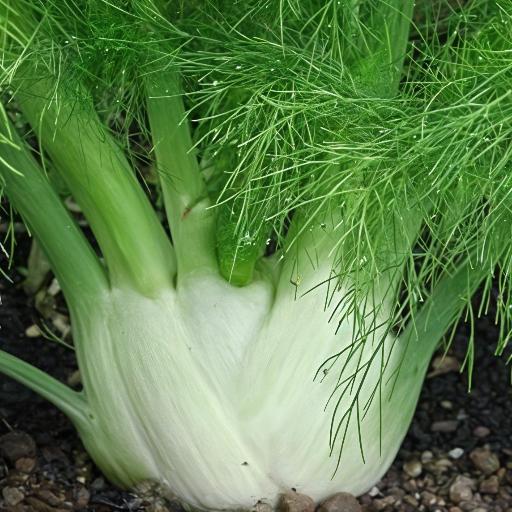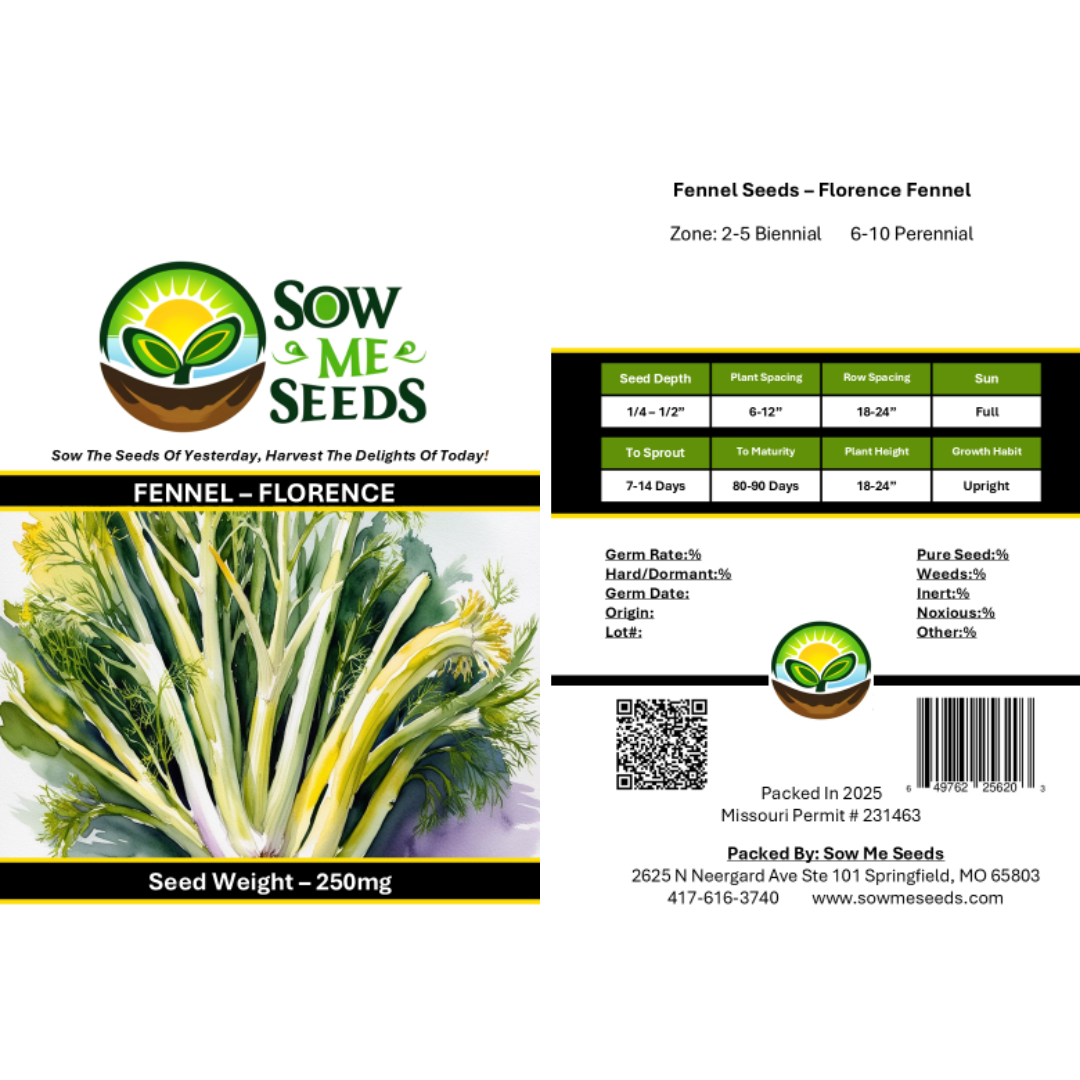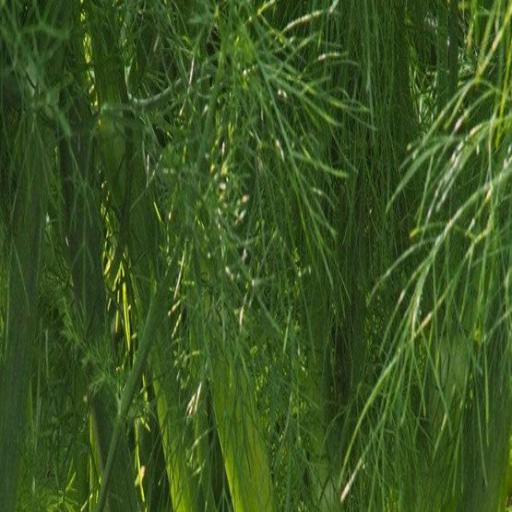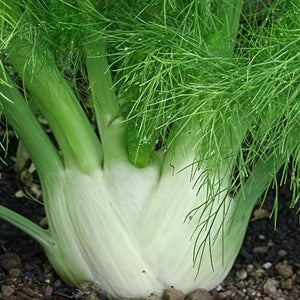- Hardiness Zone: 2-5 Biennial Typically Grown As An Annual
- Hardiness Zone: 6-10 Perennial Typically Grown As An Annual
Seed Depth: 1/4 inch
Seed Spacing: 6 inches
Row Spacing: 18–24 inches
Sunlight: Full sun
Days to Sprout: 7–14 Days
Days to Maturity: 80–90 Days
Growth Habit: Upright, Bulb-Forming
Sunlight: Requires full sun for at least 6–8 hours daily.
Soil Type: Prefers well-drained, rich, and slightly acidic soil with a pH of 5.5–6.8.
When to Plant: Best planted in early spring after the last frost or in late summer for a fall harvest.
Direct Sowing: Sow seeds directly into the garden, spacing them 6 inches apart, with rows 18–24 inches apart.
Indoor Sowing: Start seeds indoors 4–6 weeks before the last frost date; transplant carefully to avoid disturbing the roots.
Succession Planting: Sow seeds every 2–3 weeks to ensure a continuous harvest.
Watering: Keep soil consistently moist but not waterlogged, especially during bulb formation.
Fertilizing: Use a nitrogen-rich fertilizer early, then switch to a balanced fertilizer as bulbs develop.
Pruning: Remove any flower stalks that may form prematurely to focus energy on bulb growth.
Pest and Disease Control: Protect against aphids and caterpillars with organic sprays or companion planting.
When to Harvest: Harvest when bulbs reach 3–4 inches in diameter, typically 80–90 days after planting.
How to Harvest: Cut the bulb at ground level with a sharp knife; fronds can also be harvested for culinary use.
Seed Collection: Allow some plants to bolt and go to seed; collect seeds once fully dried on the plant.
Storing Seeds: Store seeds in an airtight container in a cool, dry place.
Why You’ll Love It
Delicious Dual Use: Enjoy the crunchy bulb and the fresh, anise-flavored leaves.
Cool-Season Favorite: Thrives in early spring or fall gardens with mild temps.
Beautiful in the Garden: Feathery greens and tall flower stalks add elegance to garden beds.
Pollinator Friendly: Flowers attract bees and beneficial insects late in the season.
Plant Characteristics
Height: 24–36 inches
Growth Habit: Upright, with thick bulb bases and fern-like leaves
Leaf Type: Fine and wispy, similar to dill but with a stronger aroma
Days to Maturity: 80–100 days
Hardiness: Hardy annual or biennial in mild climates
Flavor and Culinary Uses
Flavor: Sweet and crisp with a mild licorice or anise-like flavor
Culinary Uses: Use raw in salads, roasted as a side, or sautéed in soups and stews; fronds make a great garnish or herb butter
Companion Planting Tips
Good Companions: Dill, calendula, and nasturtium
Avoid Planting Near: Tomatoes, beans, or coriander (fennel can inhibit growth of nearby vegetables)
Bonus Benefit: Helps attract pollinators and natural pest controllers like ladybugs
Common Issues and Solutions
Bolting in Heat: Grow in cooler weather and keep soil consistently moist to prevent early flowering
Poor Bulb Formation: Thin seedlings early and avoid crowding to promote bulb development
Aphid Problems: Spray with a gentle blast of water or apply neem oil as needed
Seeds Per Packet
| 250mg | Approximately 300 |
| 1g | Approximately 1,200 |
Why You’ll Love It
Delicious Dual Use: Enjoy the crunchy bulb and the fresh, anise-flavored leaves.
Cool-Season Favorite: Thrives in early spring or fall gardens with mild temps.
Beautiful in the Garden: Feathery greens and tall flower stalks add elegance to garden beds.
Pollinator Friendly: Flowers attract bees and beneficial insects late in the season.
Plant Characteristics
Height: 24–36 inches
Growth Habit: Upright, with thick bulb bases and fern-like leaves
Leaf Type: Fine and wispy, similar to dill but with a stronger aroma
Days to Maturity: 80–100 days
Hardiness: Hardy annual or biennial in mild climates
Flavor and Culinary Uses
Flavor: Sweet and crisp with a mild licorice or anise-like flavor
Culinary Uses: Use raw in salads, roasted as a side, or sautéed in soups and stews; fronds make a great garnish or herb butter
Companion Planting Tips
Good Companions: Dill, calendula, and nasturtium
Avoid Planting Near: Tomatoes, beans, or coriander (fennel can inhibit growth of nearby vegetables)
Bonus Benefit: Helps attract pollinators and natural pest controllers like ladybugs
Common Issues and Solutions
Bolting in Heat: Grow in cooler weather and keep soil consistently moist to prevent early flowering
Poor Bulb Formation: Thin seedlings early and avoid crowding to promote bulb development
Aphid Problems: Spray with a gentle blast of water or apply neem oil as needed
Seeds Per Packet
| 250mg | Approximately 300 |
| 1g | Approximately 1,200 |





Share and get 15% off!
Simply share this product on one of the following social networks and you will unlock 15% off!